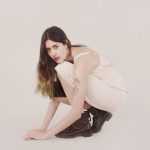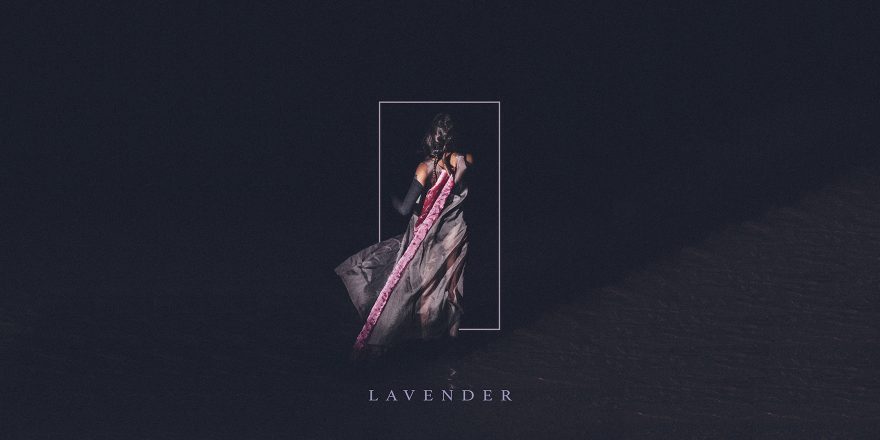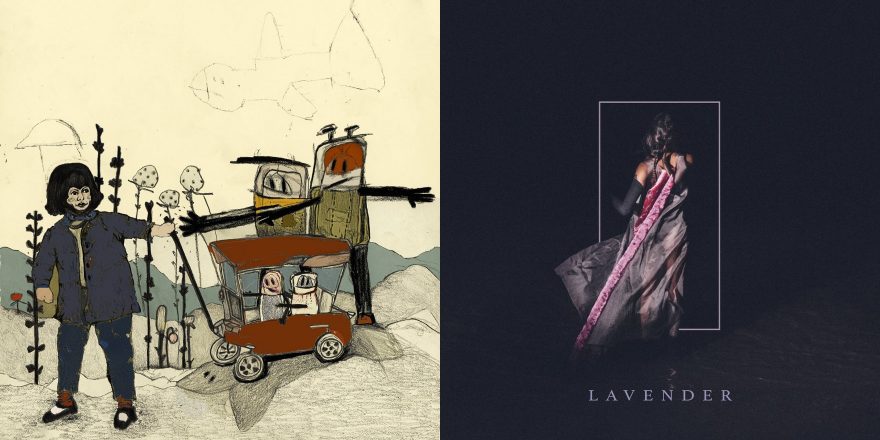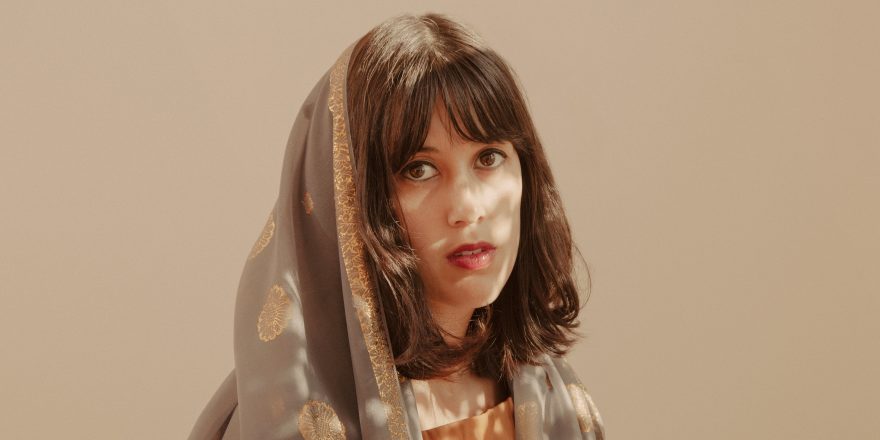I didn’t set out to make a character or a pseudo-concept album at all. Fresh off the heels of my last album Lavender — a meditation on grief, familial legacy, and personal apocalypses — I wanted to write a more uplifting record, focused on love and partnership. I had just gotten engaged and was starting a new chapter of life, taking time off touring to settle into our home in quiet Upstate New York. I was determined to show the world, and myself, a softer, less troubled side. But that isn’t the album I ended up writing. The muse has its own designs, and as much as we may want to play architect and erect the structures of our dreams, sometimes we are destined to find other shelters.
I found myself in a world of summer. Summer has always been my favorite season. Despite growing up in the long harsh winters of Western Massachusetts, I don’t do well with cold. It must be my Indian blood, yearning for the heat of an ancestral homeland. The summer months are when I come alive: twilight on the porch with the smell of earth heavy in the air, and the first fireflies rekindling an old sense of wonder as they pulse through the woods. It’s not the bright summer days that do it for me so much as it is the blue summer evenings, sweet and drowsy, softened by a thousand shades of green: jade and emerald, sage and pear. It’s the warm charcoal smudge of distance and the closer glowing ember from the grill. Walking home from the bar to a chorus of crickets in the thick grass along the road. Dandelion heads that stand out at dusk like a field of fuzzy lollipops. Moths, moss. Summer makes me remember.
But when you open the doorway to remembering, you let all of it in. And not all memories are welcome. That summer when I started writing this album, I was reeling from events in my life that left me isolated and questioning so much about myself and the choices I had made. I’d become aware of this slow procession of people exiting in my life, and I couldn’t help but wonder what I had done wrong. With my partner on tour with his band, I was often alone in our small town, far from my community. And so I started looking back, pulling on the threads of myself until they began to unravel. Under the shade of the locust tree in the yard, I dredged up a lot of old hurt: friendships that had ended or no longer worked; a sense of being abandoned by the world; and, at the core of it all, a longtime dissatisfaction that I had with myself, a self-loathing that grew like a rotten seed. What had I done to bring myself here?
I’ve always considered myself a caretaker of sorts (that was certainly the role I took on in my fractured family). But here I was wanting to take care of the people in my life – to nurture a relationship that was bound for marriage – when my internal landscape was totally ravaged. You can’t care for others if you can’t care for yourself, or as RuPaul so famously says at the close of every episode of Drag Race: “If you can’t love yourself, how in the hell you gonna love somebody else?” This was soil erosion on a personal level. Soil needs to be rich, compact, and strong to nourish life. If it’s too loose or too rocky, nothing can grow. And I was pure gravel.
I began to wonder, what does a failed caretaker look like? Who is she? How does she act and what does she do? She would live in the carriage house on a big estate, I imagined, where she’s been hired to tend to the sprawling grounds one summer. But rather than getting to work, she keeps finding herself drawn to the porch, which is a kind of portal to her ruminations on the past. She’s preoccupied with thoughts of others—lovers, friends—and as a result, she totally neglects her duties. There are weeds growing everywhere. Spiders spin their nests in every corner of the house. It’s humid: fruit is spoiling on the trees, falling with a dull thud that she sometimes mistakes for footsteps. In the evenings, she watches cars pass in the distance, feeling restless in her solitude. The specter of her best self is always just beyond her grasp: she wants to be better for herself and for others, but she keeps running through the overgrown meadows of her mind, going nowhere.
This was my first time creating a character for an album and a first step away from purely autobiographical writing. I took this approach for a few reasons. First, I wanted to try my hand at something new stylistically because it simply sounded fun. With every album I write, I’m always looking for a new angle to take or a different tool to try. Devising a character that exists outside the outlines of myself allowed me to work in more dimensions and depths, rather than just skating the flat surface of first-hand experience.
Secondly, I liked the idea of creating a character as a pushback against the media’s focus on the person behind the piece of art, which sometimes leads to a failure in appreciating the creation on its own merit. There is a human tendency to want to interpret art – novels, paintings, songs – as autobiographical extensions of their creators. We want to know, who is this person who made this thing? So we look for clues in the thing itself. This is usually benign (why not try to understand each other?) and almost never ill-intentioned. But at the same time, in peeking behind the artistic offering and demanding more, we put the artist in a box that can’t possibly contain them, which in turn winds up putting us the viewer in our own kind of box. In other words, placing narrative limitations on the art we consume can backfire. Mystery, once its reined in, is no longer mysterious. We are depriving ourselves of magic if we try to know all the answers.
A character is a sly way to subvert this idea and offset the view. To be sure, this character of The Caretaker was born from the facts of my life and its events, but she took on a life of her own, and through the lens of distance, I can look at her and not feel the full weight of an outside gaze. I suppose I needed that distance to feel safe. In a sense, I have thrown a rock at the mirror. Now, when you spend time with this music, you get me and my distorted echo, over and over, filling the frame like a fractal. It’s refraction as distraction, but it’s also, I hope, a sort of a funhouse that keeps you coming back for more.
Finally, and perhaps most importantly, I created The Caretaker because I’m not that person anymore. After that summer, I continued writing the album for the better part of a year. I wrote in autumn when the yard filled up with the confetti of shed leaves. I wrote in winter when the snow fell in wet sheets. I wrote in spring when the first crocuses emerged by the compost heap. And as the seasons slipped by, I kept summer in my mind. I could see it there: the porch, the blue dusk, the wild woods extending far beyond the circle of light. But as I moved farther away from physically being rooted in that time and space, the narrator of the album peeled away from me like a shadow: a younger self, a summer self. She was an echo, a dream — not me but part of me. I wanted to move on, to exhale and exorcise the dissatisfaction and loneliness and fear that I felt at that point in my life. So I’ve left her there for you to find, forever pacing the porch with a lit cigarette, a lonely observer of the blinking lights: fireflies and cell phone towers and faraway cars, all signs of life that call to her. She’s not sure if she’s ready to forgive herself and reach back out to the world, but I am.






